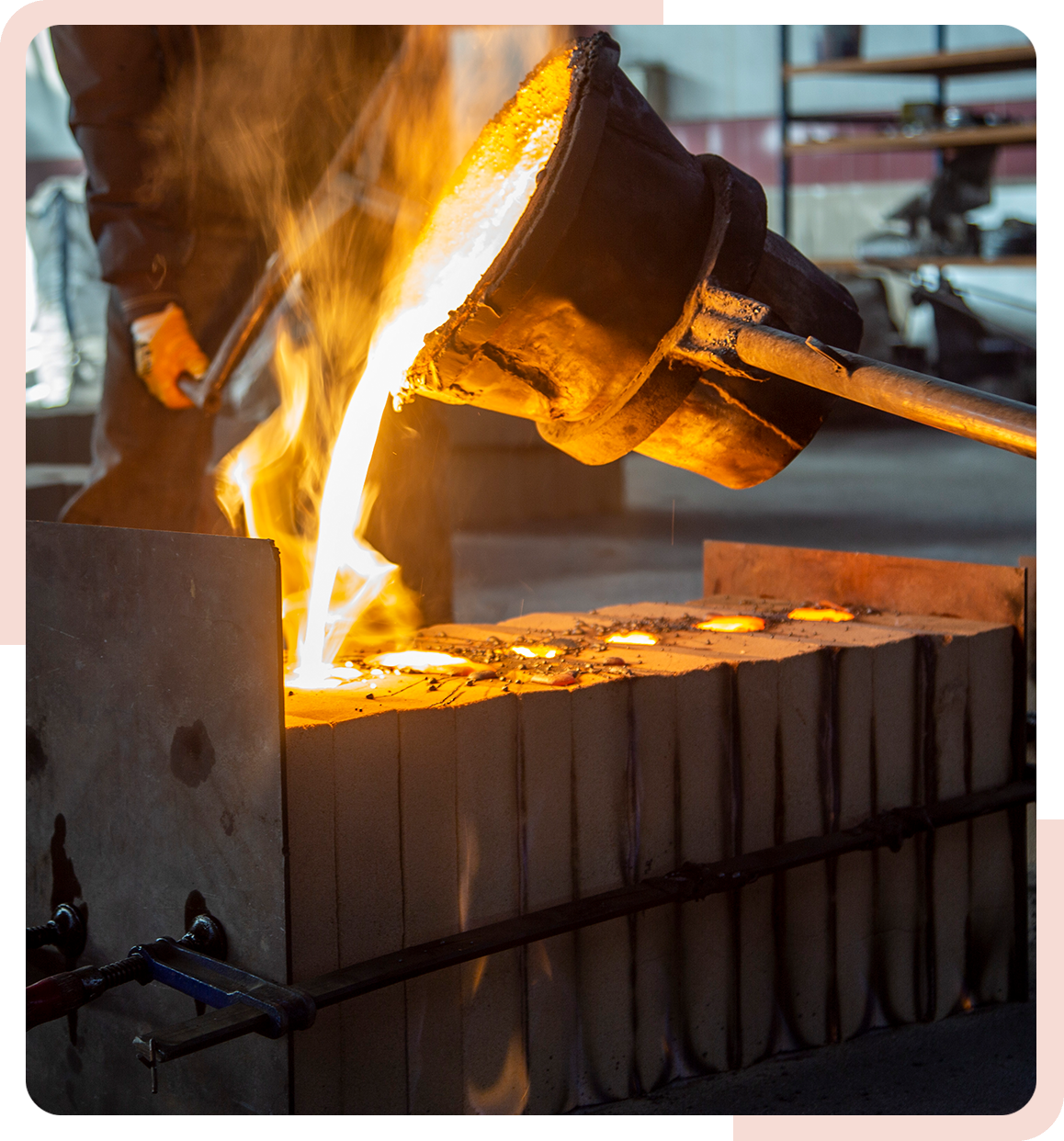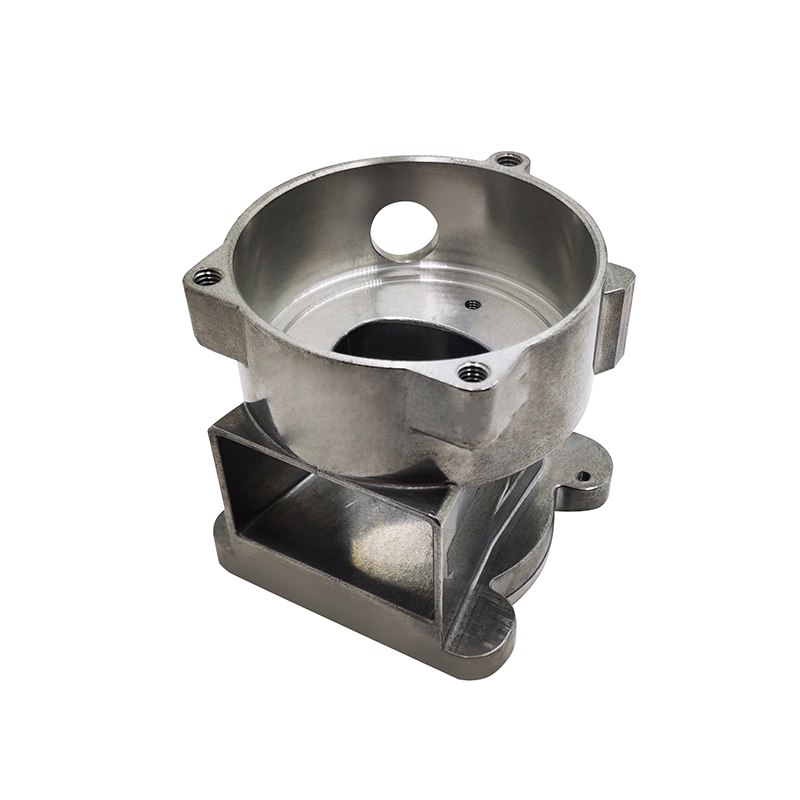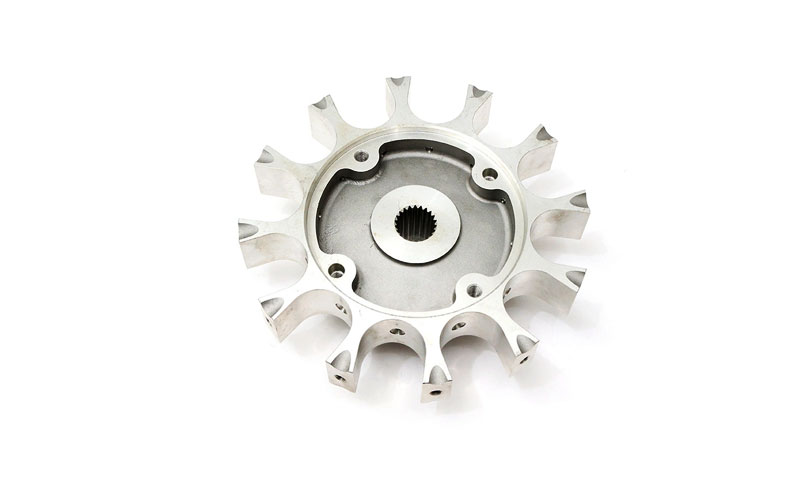Why Aluminum Casting Company Indispensable in the Aerospace Industry
Aluminum Casting Explained: Secret Facts and Insights for Market Professionals
Aluminum casting functions as an important process in modern-day production, shaping parts throughout various fields. Its diverse techniques, such as sand and die casting, provide to different production demands. The one-of-a-kind homes of aluminum alloys boost their applicability, yet challenges stay in keeping top quality and efficiency. Comprehending these facets is vital for sector professionals. What are the most up to date innovations and best practices that can additionally maximize this procedure?
Overview of Aluminum Casting Processes

Crucial element of aluminum casting procedures consist of the preparation of mold and mildews, which might be made from sand, metal, or ceramic materials, relying on the intended use. Furthermore, temperature level control is critical to assure appropriate melting and solidification of aluminum.
The casting procedure permits elaborate styles and can attain high levels of dimensional accuracy. Once cooled down, the castings might undergo completing operations such as machining or surface area therapy to satisfy certain performance criteria. On the whole, aluminum casting acts as a flexible manufacturing method, efficiently fulfilling the varied demands of different markets.
Sorts Of Aluminum Casting Approaches
In the domain of aluminum casting, numerous methods are used to achieve different outcomes. Sand casting methods give versatility and cost-effectiveness for intricate forms, while die casting procedures offer high accuracy and efficiency for automation. Comprehending these approaches is essential for picking the suitable strategy based on job needs.
Sand Casting Techniques
Sand casting methods stand for a basic technique in aluminum casting, where sand is made use of as a mold product to shape molten steel. This procedure includes developing a pattern from the desired component, which is then put in a sand combination to form a mold. The sand is compacted around the pattern, and after elimination, it develops a cavity in the form of the part. Molten aluminum is poured into this tooth cavity, permitting it to solidify and cool. One substantial benefit of sand casting is its flexibility; it can fit large elements and complicated forms. In addition, the products used are relatively affordable, making it an obtainable alternative for different production applications in the aluminum industry.
Die Casting Processes
Die casting processes are a popular technique for shaping aluminum elements, using high-pressure techniques to require molten steel into specifically engineered mold and mildews. This procedure is particularly favored for its capability to produce complicated forms with limited resistances and a smooth coating. There are 2 primary sorts of die casting: warm chamber and chilly chamber. Hot chamber die casting appropriates for metals with low melting points, enabling faster manufacturing prices. On the other hand, chilly chamber die casting is excellent for higher melting point steels, calling for a different melting heater. Both techniques boost performance and minimize material waste, making them vital in automotive, aerospace, and consumer items sectors. Understanding these processes assists specialists pick one of the most proper strategy for their specific applications.
Product Characteristic of Aluminum Alloys

Strength and Resilience
Stamina and longevity are crucial features of aluminum alloys that make them suitable for different casting applications. These products show a beneficial strength-to-weight proportion, permitting for the creation of lightweight yet robust elements. With respect to tensile strength, certain aluminum alloys can be crafted to hold up against substantial loads without deforming. This building is particularly crucial in markets such as aerospace and automotive, where performance and security are paramount. Furthermore, aluminum alloys typically retain their mechanical homes under varied temperature level conditions, guaranteeing regular performance. The intrinsic ductility of these alloys likewise enables effective shaping throughout the casting process, making it much easier to create complicated geometries. Generally, the stamina and toughness of aluminum alloys contribute considerably to their prevalent use in innovative applications.
Deterioration Resistance Characteristics
While aluminum alloys are treasured for their stamina and light-weight residential or commercial properties, their corrosion resistance is an additional essential attribute that improves their suitability for numerous applications. Aluminum naturally forms a safety oxide layer when subjected to moisture, which aids to stop further oxidation. This integral home makes aluminum alloys especially useful in atmospheres prone to rust, such as industrial and aquatic settings. Additionally, different alloy compositions can affect resistance levels, with particular alloys particularly crafted to improve this particular. Treatments like plating can even more boost rust resistance by enlarging the oxide layer. Understanding the rust resistance of aluminum alloys is essential for market specialists when selecting materials for tasks requiring sturdiness and long life in difficult atmospheres.
Benefits of Aluminum Casting in Manufacturing
Aluminum casting offers many benefits in manufacturing, making it a favored selection for various markets. One substantial advantage is its lightweight nature, which adds to minimized transport prices and improved energy effectiveness in output. Aluminum's outstanding thermal and electric conductivity boosts functionality in applications needing heat dissipation or electrical transmission.
The product's ability to be cast right into detailed forms enables design adaptability, reducing the requirement for extra machining processes. Additionally, aluminum casting exhibits exceptional rust resistance, leading to longer product lifespans and lower maintenance prices.

Typical Applications of Aluminum Castings
The flexibility of aluminum casting allows its prevalent usage across numerous markets. Common applications consist of automotive parts, where lightweight and corrosion-resistant elements, site link such as engine blocks and transmission real estates, boost vehicle performance. In the aerospace field, aluminum castings are used for architectural components, supplying stamina without adding substantial weight.
In addition, the electrical industry gain from aluminum spreadings in making enclosures and heat sinks, where thermal conductivity is crucial. The consumer items market additionally incorporates aluminum castings in products like kitchenware, furnishings, and attractive items, integrating aesthetics with functionality.
The building industry employs aluminum spreadings for building aspects, window frames, and fixtures, which offer resilience and layout flexibility. On the whole, the varied applications of aluminum spreadings underscore their value in modern-day production, adding to improvements in efficiency and product style across numerous fields.
Advancements and Technological Innovations
As sectors remain to evolve, technologies in aluminum casting modern technology are transforming production procedures and product capacities. Improvements in 3D printing and additive manufacturing have actually enabled the creation of intricate geometries that were previously impossible to attain with conventional methods. These modern technologies permit rapid prototyping, minimizing lead times and prices.
Furthermore, enhancements in mold style and products have actually improved the casting process by boosting efficiency and lowering waste. The combination of clever manufacturing strategies, such as IoT gadgets and real-time information analytics, permits far better monitoring and optimization of manufacturing criteria, resulting in better outcomes.
Advancements in aluminum alloys supply boosted stamina, rust resistance, and lightweight buildings, providing to the expanding demands in vehicle and aerospace industries. Jointly, these developments are not only enhancing efficiency but likewise fulfilling the strenuous requirements of modern design applications.
Finest Practices for Quality Control in Aluminum Casting
Making sure premium results in aluminum casting needs adherence to ideal practices that include numerous phases of the manufacturing procedure. Initially, thorough product assessment is necessary to validate the top quality of aluminum alloys made use of, as contaminations can substantially affect the final item. Executing specific melting and pouring strategies reduces flaws; preserving perfect temperatures prevents oxidation and promotes uniformity.
Mold and mildew style plays a vital role; making use of computer-aided style (CAD) can enhance precision and reduce human mistake. Regular monitoring of the cooling procedure is important to prevent bending and contraction. Furthermore, using non-destructive testing approaches, such as ultrasonic or X-ray examinations, helps recognize interior flaws without harming the elements.
Lastly, developing a responses loop with drivers and engineers fosters continual improvement, making certain that quality assurance procedures advance along with technological advancements. By complying with these ideal practices, manufacturers can enhance the integrity and performance of aluminum spreadings.
Frequently Asked Inquiries
What Are the Ecological Effects of Aluminum Casting?
The ecological influences of aluminum casting include considerable power intake, greenhouse gas emissions, and prospective water pollution from factory procedures. Additionally, bauxite mining for aluminum ore can lead to habitat damage and soil destruction.
How Does Aluminum Casting Compare to Other Steel Casting Procedures?
Aluminum read the full info here casting generally uses benefits in light-weight parts and deterioration resistance contrasted to various other processes, such as iron or steel casting, which may offer greater stamina however lead to much heavier and much less corrosion-resistant items. - Precision aluminum casting
What Are Common Defects in Aluminum Castings and Their Reasons?
Usual flaws in aluminum spreadings consist of porosity, shrinking, and inclusions. review Causes often originate from inappropriate putting techniques, inadequate mold and mildew style, or contamination of the liquified steel, influencing the end product's honesty and efficiency.
What Safety and security Precautions Should Be Taken Throughout Aluminum Casting?
During aluminum casting, vital security precautions include putting on protective gear, making sure correct ventilation, preserving a clean work area, managing liquified steel with treatment, and complying with recognized procedures to reduce threats of burns, breathing threats, and crashes.
Just How Can I Enhance the Effectiveness of My Aluminum Casting Procedures?
To enhance effectiveness in aluminum casting procedures, one should maximize mold style, streamline product handling, employ automated procedures, carry out normal upkeep on equipment, and purchase worker training to boost skills and performance.
Various approaches exist, aluminum casting includes several key processes that cater to various applications and demands. Trick components of aluminum casting processes include the prep work of molds, which may be made from sand, metal, or ceramic products, depending on the intended usage. Sand casting techniques stand for a fundamental approach in aluminum casting, where sand is utilized as a mold product to shape liquified steel. As industries proceed to evolve, technologies in aluminum casting innovation are changing production processes and item capabilities. Making sure top notch results in aluminum casting needs adherence to best methods that incorporate various phases of the production process.